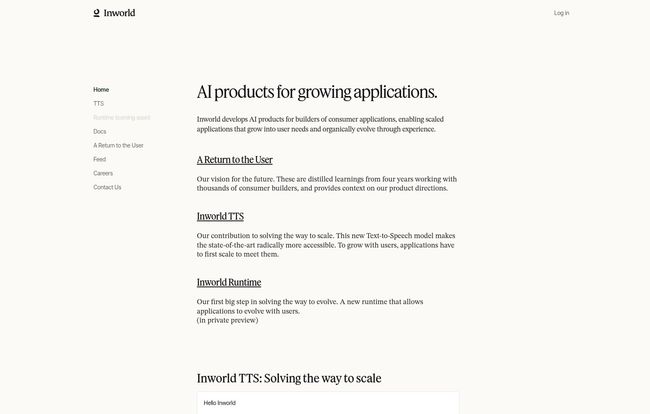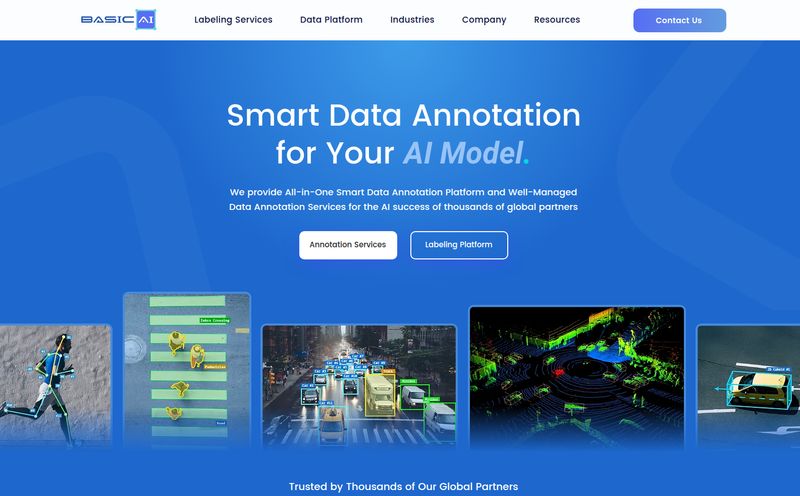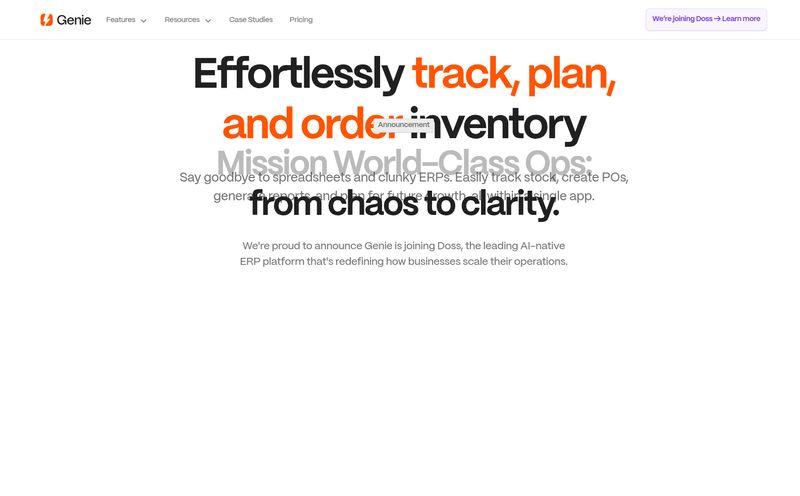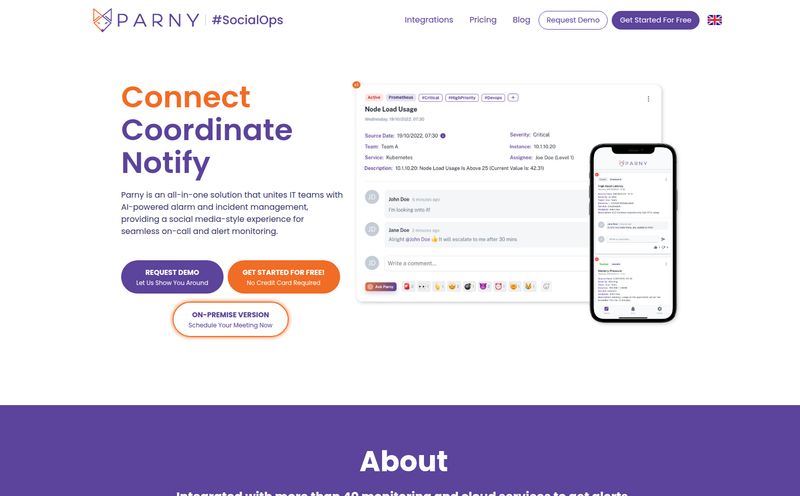For decades, talking to a character in a video game has been… disappointing. You run up to a shopkeeper, you click on them, and you get the same three lines of dialogue you’ve heard a hundred times. They stare back with those cold, dead eyes, their programming barely hidden. The magic is gone. We’ve built these sprawling, gorgeous worlds, but they’re often populated by what amount to animatronic puppets. It breaks the immersion, right?
I’ve been watching the generative AI space for years, and frankly, a lot of it is just marketing fluff wrapped in a fancy UI. But every now and then, something comes along that makes you lean in a little closer. For me, that’s Inworld AI. It’s not just another chatbot; it’s a platform designed from the ground up to give these digital puppets a brain. And maybe, just maybe, a soul.
So, What is Inworld AI, Really?
Okay, cut through the jargon. Inworld AI is a developer platform for creating AI-driven characters. Think of it less like a scriptwriter and more like a brilliant improv actor who knows the entire lore of your world. You give it the framework—the character's personality, their background, their knowledge, their motivations—and it handles the rest. The goal is for players to have genuinely open-ended conversations that feel natural and unscripted. No more dialogue trees. Just… talking.
It’s built for games, sure, but also for any kind of interactive entertainment or virtual world. The idea is to move beyond the static NPC and create dynamic, believable characters that react and remember. That’s the holy grail, isn't it? A character that remembers you saved their village an hour ago, or one that gets annoyed if you keep asking the same dumb question. That’s the kind of stuff that makes a virtual world feel alive.

Visit Inworld AI
The Tech That Makes It Tick
This isn't just smoke and mirrors. Inworld is leaning on some serious tech to make this happen, and a few things in particular caught my eye.
Real-time Character Interaction
The biggest hurdle for any generative AI in games is latency. If a player asks a question and the NPC takes five seconds to think of a reply, the illusion is shattered. Inworld claims its Hybrid Inference Architecture is built for real-time performance, even with a massive number of players online at once. This is critical. For live service games or bustling virtual spaces, you can't have laggy conversations. It just doesn't work.
Scaling Up Without Breaking the Bank
Here’s something that will make any studio head or indie dev with a budget sit up straight. Their model is designed for cost efficiency at scale. I saw a graph on their site that basically shows the price per million characters of text-to-speech goes down as your application grows. This is huge. Usually, more users means exponentially more cost. Inworld seems to have flipped that script, making it more affordable as you become more successful. That’s a business model I can get behind.
Actually Owning Your AI
This is a big one. With a lot of third-party tools, you're essentially renting the tech. Inworld offers a path to what they call "Full AI Ownership." This means you can have a version of the AI that is yours, customized for your game. It's not a black box. For big studios with unique needs and a desire for control over their core technology, this is a massive selling point. It’s the difference between renting a fancy car and having your own custom-built engine.
The Good, The Bad, and The Code-Heavy
No tool is perfect, and from my years in this business, I’ve learned to read between the lines of the marketing copy. Inworld AI has some incredible strengths, but there are definately some practical considerations to keep in mind.
On the plus side, the promise of continuously evolving quality is amazing. An AI that gets better and more engaging as more people interact with it? Yes, please. The real-time performance for millions of users and the cost efficiency we just talked about are massive wins. It also supports a wide range of models, so you’re not locked into one specific way of doing things.
However, let's ground ourselves. This isn’t a simple drag-and-drop solution. To really make it sing, especially if you're going for that full ownership model, you'll likely need dedicated engineering resources. The website itself mentions this could require customization. This isn't a tool for a first-time solo dev who's just learning their way around an engine. It’s a professional-grade platform, and that comes with a certain level of required technical expertise. You also have to sign up for a license, so there’s a direct business relationship from the get-go.
Let's Talk Money: The Inworld AI Pricing Question
So, how much does all this cost? The short answer is: it depends. Inworld uses a custom pricing model. You won't find a neat little three-tiered pricing table on their site. Instead, they have a page for the Inworld License and ask you to reach out to them directly.
Now, don't let that scare you. In the world of B2B and enterprise-grade tools, this is pretty standard. It means they want to understand your project's scale, your specific needs, and how you plan to use their character engine before giving you a number. It allows them to craft a deal for a huge AAA studio that's different from what a promising, well-funded indie team might need. My advice? Don't be shy. If you have a serious project you think could benefit from this, reach out to them. The worst they can say is no, and you'll get a much clearer picture than I could ever give you here.
"We're committed to working with you to find a solution that fits your idea, so please reach out." - Inworld AI Website
My Final Two Cents
So, is Inworld AI the future? I'm cautiously optimistic. I think we’re on the cusp of a major shift in how we create and interact with virtual characters. The days of the wooden, repetitive NPC are numbered. Tools like Inworld are leading the charge, providing the complex infrastructure needed to make dynamic characters a reality.
It's not a magic wand. It's a power tool. In the wrong hands, it might not do much. But for a creative team with a strong vision and the technical chops to back it up, Inworld could be the key to creating worlds that feel truly, deeply, and surprisingly... human.
Frequently Asked Questions about Inworld AI
- What makes Inworld different from other AI NPC tools?
- Its focus is on the whole package: not just dialogue, but emotions, memory, and behavior, all delivered in real-time. The emphasis on a scalable, cost-effective architecture and the option for full AI ownership also set it apart from many simpler solutions.
- Is Inworld AI suitable for a small indie team?
- It depends. A small team with strong engineering skills could certainly make it work. However, a team without dedicated programmers might find the customization aspects challenging. It's more of a pro-level tool than a beginner's asset.
- Do I need to be an AI expert to use it?
- You probably don't need a PhD in machine learning, but a solid understanding of game development and system integration is a must. The platform is designed to handle the deep AI complexity for you, but you still need to integrate it into your project effectively.
- What kind of games would benefit most from Inworld?
- RPGs, open-world adventures, social simulation games, and narrative-driven experiences are prime candidates. Any game where deep player interaction with the world and its inhabitants is a core part of the experience could see a huge benefit.
- How does the cost efficiency at scale work?
- While the exact details are proprietary, their Hybrid Inference Architecture is designed to optimize processes as usage grows. This means the computational cost per interaction can decrease with volume, unlike traditional models where costs often scale linearly with the number of users.
- Does Inworld AI integrate with major game engines?
- Yes. Their website lists partners like Unity and Unreal Engine, which are the two biggest engines in the industry. This suggests they have integrations ready to go for the platforms most developers are already using.
Conclusion
We've been waiting a long time for game characters to feel less like robots and more like residents of the worlds we love to explore. Inworld AI presents a compelling and powerful framework to make that happen. It’s an ambitious platform for an ambitious new era of interactive entertainment. It will be fascinating to see the characters and stories that developers bring to life with it.



